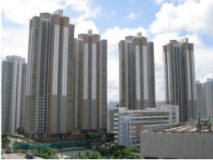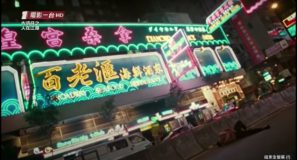Synopsis:
Hong Kong film “Young and Dangerous” filming took place in Hong Kong between 1994 and 1995, stars Ekin Cheng, Jordan Chan, and Francis Ng .The film also made director Andrew Lau one of the most sought-after directors in the Hong Kong film industry, directing a number of blockbusters with big budgets. The movie begins in a famous Hong Kong temporary housing area, Lam Tin Estate. Lam Tin Estate is a public housing estates preserve both Hong Kong’s housing history and serve as typical examples of old urban areas.
Script:
Pinky: Hi, everyone. My name is Pinky.
Mandy:Hi, I am Mandy.
Mandy: The film we have selected is named “Young and Dangerous.” It is from a triad-themed Hong Kong comic. The film was released in 1996. It’s the story of a gangster’s bottom member becoming the top talker. Content emphasizes expressing “brotherhood” The film also made director Andrew Lau one of the most sought-after directors in the Hong Kong film industry, directing several blockbusters with big budgets. In this film, Ekin Cheng plays Chan Ho Nam and tells his story through his ups and downs. which begins in 1985, then fast forwards to 1995, when Chan Ho Nam and his friends have become the main members of gangsters. The movie series gave the audience what gangsters looked like and triggered a wave of gangster films.
Mandy : Compare and contrast how the space/place/building is presented in the film and how it is seen and experienced in reality?
Pinky: The first “Young and Dangerous” scene is set in 1985 at a football playground in Lam Tin Estate’s Temporary Housing Area. Half of the buildings in Lam Tin Estate had already been demolished and rebuilt when the film was shot in 1994-1995. The director filmed the Lam Tin Estate before it was completely demolished. As of today, although all the buildings are different, the football playground is still preserved. It has been resurfaced to a concrete floor, completely different from the one shown in the movie.

1985 (Lam Tin Estate)
 2023 (Lam Tin Estate)
2023 (Lam Tin Estate)
Pinky: In the negotiation scene between the head actress and the head actor, some of the most authentic Hong Kong streets were portrayed at Causeway Bay plaza phase 2. A neon light illuminates street signs, poor security on the streets and the busy nightlife of Hong Kong are present in the scene. The overall color effect is warmer, and the saturation and contrast of the picture are relatively high, reminiscent of Hong Kong in the 1990s. In reality, the streets of Causeway Bay Plaza Phase 2 were narrow; there were less neon lights on the street.

1995 (Causeway Bay Plaza Phase 2)

2023 (Causeway Bay Plaza Phase 2)
Mandy : Can you discuss and reflect upon why (for what purpose) it is presented in the way/s in the film.
Pinky: Yes, compared to the previous gangster films, “Young and Dangerous” is set in a “post-modern” urban environment. A mysterious and dangerous atmosphere is created on Causeway Bay and Wan Chai streets by using unique lens and lighting designs and neon color effects. The director captures the different urban ecology of Hong Kong in the 1980s through many Hong Kong street scenes that take place in real tenements, shops, and signboards in Hong Kong’s old district. In the film, the director uses realistic techniques to convey the social problems of Hong Kong at that time, while maintaining the style of the Temporary Housing Area buildings from the 1980s. As the film uses black and white visual effects, the real scene is connected with the story, giving the audience a feeling of immersion.
Pinky: Mandy, I would like to ask what are the relationships between the people, objects in this space and the urban environment which it is embedded in ?
Mandy: The people and objects in this space and the embedded urban environment shows the image of the gangster, who is an authoritative, heroic, and positive image. It reflected some phenomena in Hong Kong society at that time. Most teenagers hoped to be a powerful gangsters. Meanwhile, since Causeway Bay is famous in Hong Kong, being the leader of Causeway Bay shows authority in Hong Kong. Also, the scene of the killing of another gangster in the film shotted the dual carriageway clearly shows that the film was shot in Hong Kong city. At the end of the movie, the main character Chan Ho Nam and his friends walked on the street with their heads held high. They were all dressed up, with slightly long hair, black leather clothes, and floral shirts with open chests. Touching the back end of the ear, followed by many people, it was so buff and prestigious! These objects all show the image and the characteristic of the gangster.
Pinky: So what does the architecture offer to the film?
Mandy : Most scenes were shot in Lam Tin Estate, Wan Chai, and Causeway Bay on Hong Kong Island. First, the Lam Tin Estate fully showed the background of Hong Kong in the 1980s due to the fire in Shek Kip Mei in 1953. It made nearly 6 thousand residents in the area homeless. Therefore, some residents settled, revealing the challenges faced by the working-class families, with teenagers easily drawn into gang culture. Next, the “Yuexiang Chinese Restaurant” in Wan Chai portrays the image of wealthy and authoritative gangsters, indicating the social classes of that time. Meanwhile, the characters are seemingly cut off from the reality of the corpses lying on the ground when Causeway Bay’s neon lights highlight the city’s vibrant bustle. The movie provides the audiences with a glimpse into an era in Hong Kong’s history by capturing the decadent and frantic feeling of a bustling and desolate city.
Mandy: Thank you for listening.
Pinky: Thank you.

Name: Chow Pinky Hoi Yan , UID: 3035994406
Yeung Lee Mun, UID: 3035994949
I appreciated your comparison of the filming location on the screen and in reality. There is some level of analysis on the two spaces Lam Tin Estate and Causeway Bay, but can be elaborated with more detail and description. What is the atmosphere or pace of Causeway Bay? What are the street conditions and elements you can see? How does the camera present the space or architecture? Why do you think the director chose to film such scenes at this location? More observations will be helpful in establishing a stronger argument. It will also help if you focused on certain scenes and did a close reading to them such that the viewers can anchor your analysis with the film. A more conversational script will also make it more engaging.